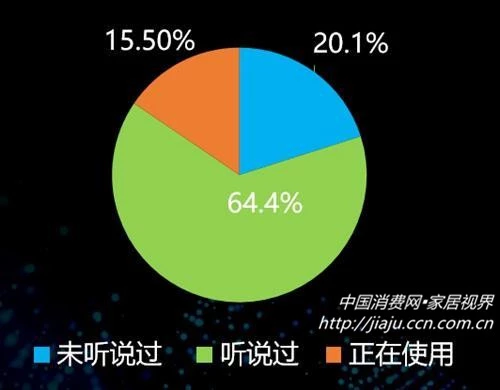According to research data in the Consumer White Paper, more than 20% of consumers have not heard of smart locks, and only 15.5% of users are using or planning to switch to smart locks. However, consumers are reluctant to replace traditional mechanical locks with smart locks, mainly due to quality and price factors. Despite the small market share, smart locks began to explode in 2017, which led to various manufacturers entering the market to seize the opportunities.
It is reported that in 2018, China's smart lock penetration rate is only about 5%, and it is mainly concentrated in first-tier and second-tier cities. However, under the strong growth trend of the smart lock market, it is expected that the penetration rate of China's smart lock market will reach 19.75% by 2020. It can be said that this forecast is very gratifying. However, there are too many entrepreneurs in the market for smart locks, which will inevitably lead to a situation of unbalanced distribution. Therefore, under the influence of imbalance between production and sales and consumer purchasing preferences, the smart lock industry will enter the "exquisite" era in 2019.
First, 2019 will be a key year for smart lock companies to compete for the market. The most intuitive competition for the market is the brand. Although, for the smart lock industry, it is difficult to make a brand with high popularity like mobile phones and home appliances, as people's living standards improve, the brand will be a top priority when customers buy smart locks.
Furthermore, on May 10, 2017, the State Council decided to formally establish May 10 as the "China Brand Day". In the future, enterprises must attach importance on their development of brand. In particular, young consumers are becoming more aware of the “brand”, asking brands prior to asking prices when buying things. Smart locks will also be no exception.
Secondly, price competition focuses on the present and survival. It is a capped competition. Brand competition focuses on the future and development. It is an endless competition, including image, product, service, network, market protection and many other contents. Therefore, the change of consumer group thinking and the rise of economic consumption capacity will directly affect and eliminate the low-end counterfeit brand in the near future.
Finally, the brand is built on the long-term superior quality and service. If the brand is the external image of the company, then the product and service are the internal image and foundation of the company. A brand with no exquisite products is meaningless for the consumer, that is, light bragging does not serve. According to industry insiders, if smart locks are to be developed in a blowout mode, people must improve the quality and make a differentiated development, and the innovation in function and appearance is also essential.

It is reported that in 2018, China's smart lock penetration rate is only about 5%, and it is mainly concentrated in first-tier and second-tier cities. However, under the strong growth trend of the smart lock market, it is expected that the penetration rate of China's smart lock market will reach 19.75% by 2020. It can be said that this forecast is very gratifying. However, there are too many entrepreneurs in the market for smart locks, which will inevitably lead to a situation of unbalanced distribution. Therefore, under the influence of imbalance between production and sales and consumer purchasing preferences, the smart lock industry will enter the "exquisite" era in 2019.
First, 2019 will be a key year for smart lock companies to compete for the market. The most intuitive competition for the market is the brand. Although, for the smart lock industry, it is difficult to make a brand with high popularity like mobile phones and home appliances, as people's living standards improve, the brand will be a top priority when customers buy smart locks.
Furthermore, on May 10, 2017, the State Council decided to formally establish May 10 as the "China Brand Day". In the future, enterprises must attach importance on their development of brand. In particular, young consumers are becoming more aware of the “brand”, asking brands prior to asking prices when buying things. Smart locks will also be no exception.
Secondly, price competition focuses on the present and survival. It is a capped competition. Brand competition focuses on the future and development. It is an endless competition, including image, product, service, network, market protection and many other contents. Therefore, the change of consumer group thinking and the rise of economic consumption capacity will directly affect and eliminate the low-end counterfeit brand in the near future.
Finally, the brand is built on the long-term superior quality and service. If the brand is the external image of the company, then the product and service are the internal image and foundation of the company. A brand with no exquisite products is meaningless for the consumer, that is, light bragging does not serve. According to industry insiders, if smart locks are to be developed in a blowout mode, people must improve the quality and make a differentiated development, and the innovation in function and appearance is also essential.


 Español
Español 中文
中文
